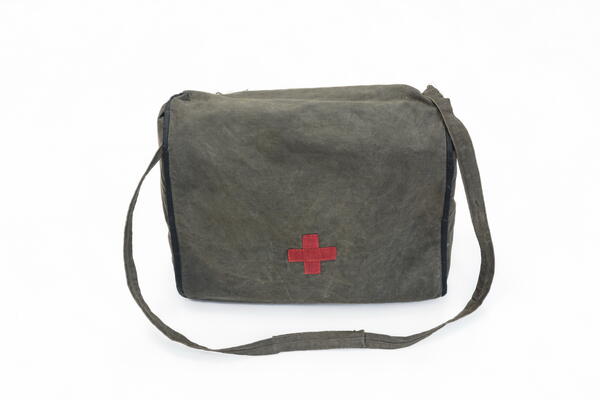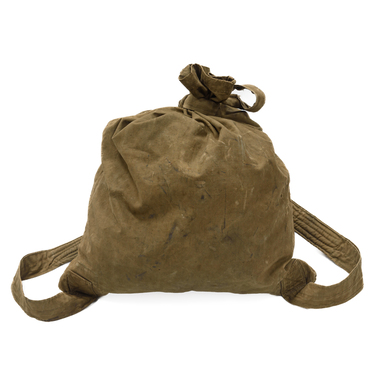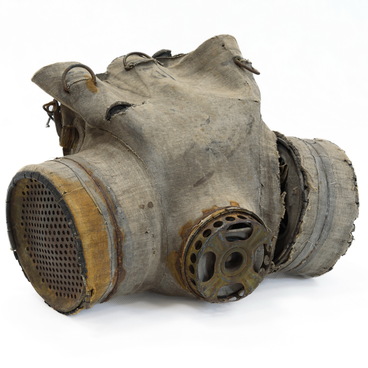First aid to the wounded soldiers of the Red Army in the company was provided by the sanitary detachment with the commander at the head. Their equipment included nurses’ and medical instructors’ bags. The main functions of the company’s sanitary detachment were to identify the wounded in platoons as soon as possible, render first aid, protect them from secondary injuries, drag the wounded to sheltered places (the so-called “nests” of the wounded), call stretcher-bearers and medical transport for the fastest delivery of the wounded to the battalion medical center (BMC) and provide the company’s soldiers with individual dressing packages. When wounded, the company soldiers provided first aid to themselves or asked a fellow soldier. However, generally it was the nurses and medical instructors that rendered first aid.
The battalion’s sanitary platoon consisted of a platoon commander — a senior military paramedic, a medical instructor and nurses. Their equipment included a field paramedic kit, a set of sterile dressings, a limited set of splints and nurses’ and medical instructors’ bags. The main task of the commander of the medical platoon was to organize a rapid removal and transportation of the wounded from companies and platoons and send them to the regimental medical center (RMC), as the BMCs were limited in their abilities to render medical aid.
The sanitary company of the regiment consisted of a senior doctor and several junior doctors, medical instructors and nurses. Their equipment included several tents, sets of sterile dressings, sets of splints and packs with medical equipment and drugs.
Qualified surgical aid in the division was provided by the medical and sanitary battalion (MSB) which organized the evacuation of wounded from regiments, deployed a divisional medical center (DMC) 6–10 km from the front line and a medical station for the lightly wounded.
The main equipment of combat medics was a sanitary bag. Its design and contents changed many times throughout its history. And the history of the sanitary bag in the Russian army began with the Crimean War. Almost simultaneously with the introduction of the medical bag, university courses such as “Organization and tactics of medical services (OTMS)” also appeared for the first time. Thus, the functions of the sanitary bag were clearly defined. It was designed to provide first aid to the wounded and burned. It provided materials to apply bandages, temporarily stop arterial bleeding, and prevent infections in wounds.
The USSR went through the entire Great Patriotic War with the sanitary bags and their specific content, accepted for use in the Red Army Sanitary Service in 1928.
The battalion’s sanitary platoon consisted of a platoon commander — a senior military paramedic, a medical instructor and nurses. Their equipment included a field paramedic kit, a set of sterile dressings, a limited set of splints and nurses’ and medical instructors’ bags. The main task of the commander of the medical platoon was to organize a rapid removal and transportation of the wounded from companies and platoons and send them to the regimental medical center (RMC), as the BMCs were limited in their abilities to render medical aid.
The sanitary company of the regiment consisted of a senior doctor and several junior doctors, medical instructors and nurses. Their equipment included several tents, sets of sterile dressings, sets of splints and packs with medical equipment and drugs.
Qualified surgical aid in the division was provided by the medical and sanitary battalion (MSB) which organized the evacuation of wounded from regiments, deployed a divisional medical center (DMC) 6–10 km from the front line and a medical station for the lightly wounded.
The main equipment of combat medics was a sanitary bag. Its design and contents changed many times throughout its history. And the history of the sanitary bag in the Russian army began with the Crimean War. Almost simultaneously with the introduction of the medical bag, university courses such as “Organization and tactics of medical services (OTMS)” also appeared for the first time. Thus, the functions of the sanitary bag were clearly defined. It was designed to provide first aid to the wounded and burned. It provided materials to apply bandages, temporarily stop arterial bleeding, and prevent infections in wounds.
The USSR went through the entire Great Patriotic War with the sanitary bags and their specific content, accepted for use in the Red Army Sanitary Service in 1928.






